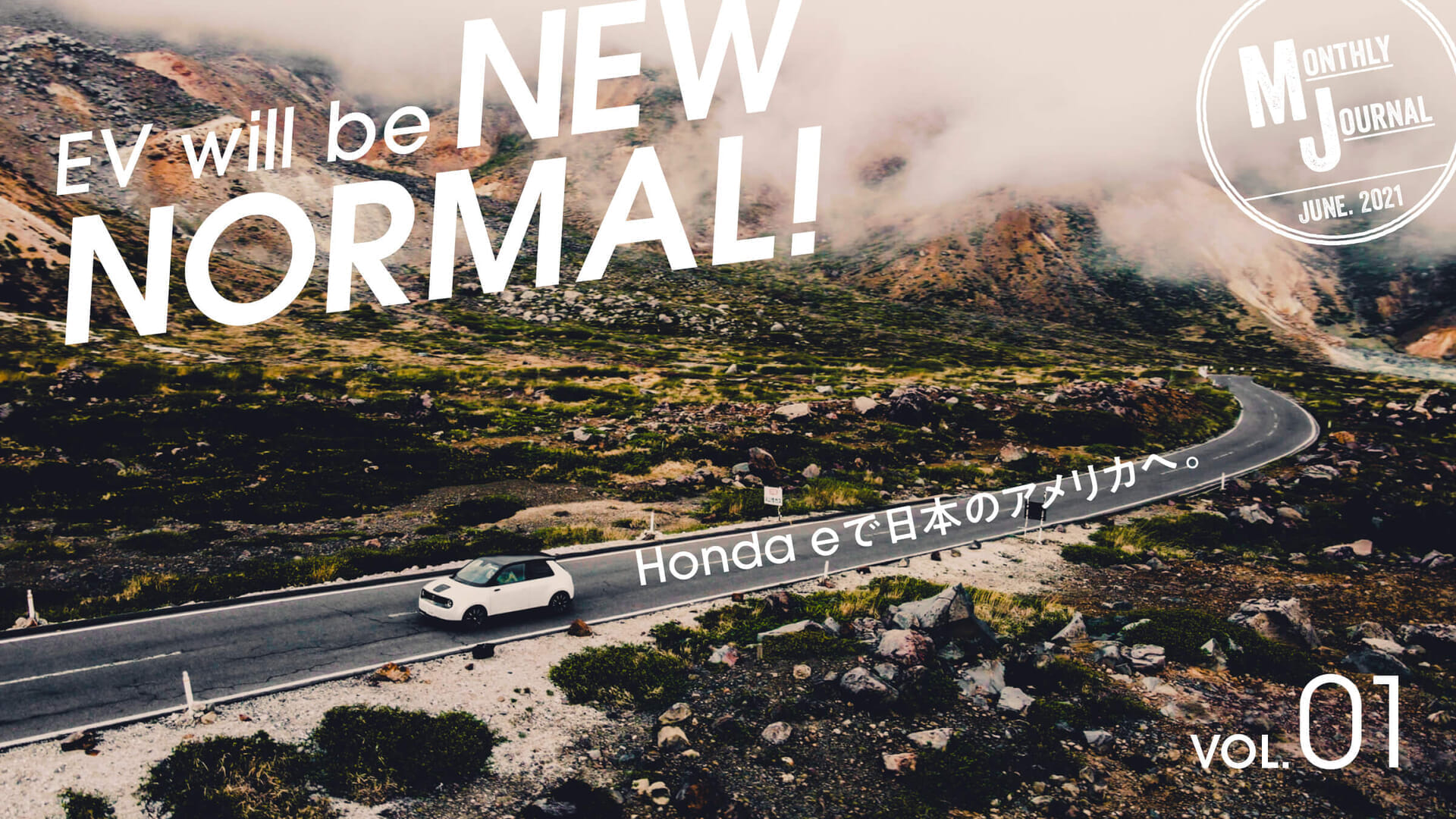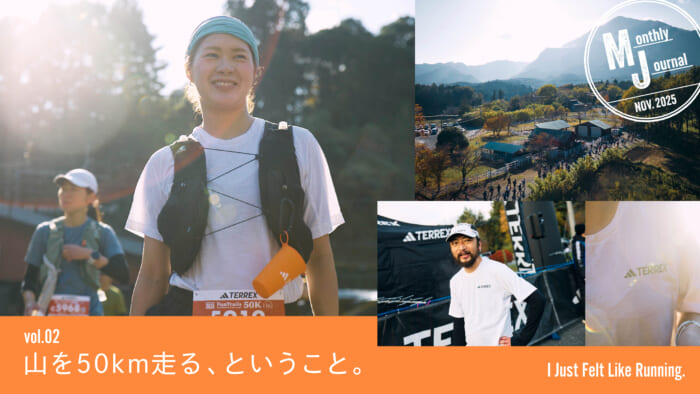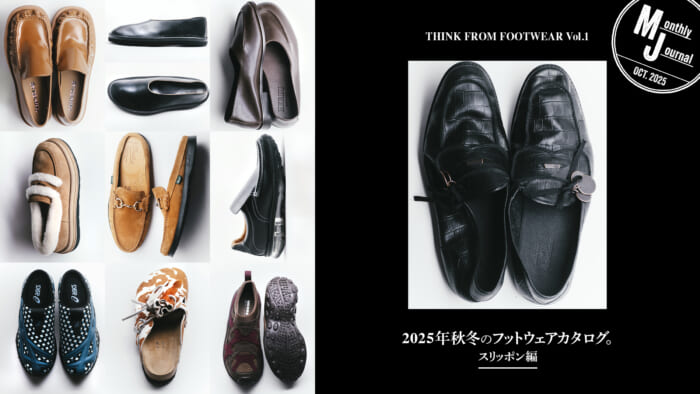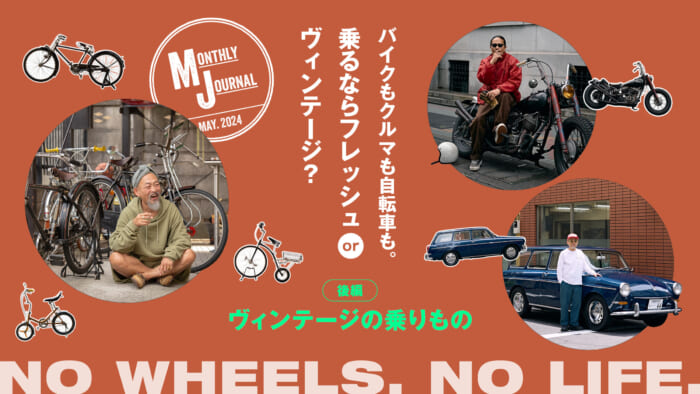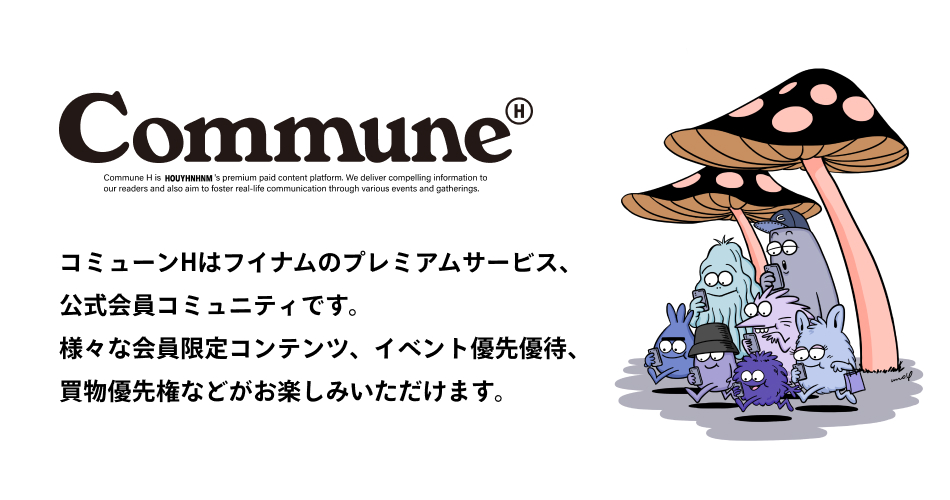I forced myself to take the Honda e, which is recommended for city driving, out for a long drive.
Isn't it about time?"
Kimura murmured from the driver's seat. . you little pussy.
We are on our way to Arizona. . We are now heading north on the Northeast Highway from the center of the city.
You're not in Arizona when you're on the Northeast Highway! . is a tsk, and rightly so. But in fact, there is a place called the Arizona of Japan. There is, in fact, a place called the Arizona of Japan.

A trip to Bandai Azuma Skyline , aka Arizona, in Fukushima Prefecture.
This two-day and one-night road trip will take us to Arizona and other American-like places in Japan. The total distance traveled was over 700 km. The Honda e has a cruising range of 259 km (in WLTC mode with the Honda e Advance), so at least three recharges are required.

On the left is HOUYHNHNM's editor Kimura , and on the right is writer Sakurai. . Both are avid travelers and have experience in road trips in the United States. . Shown in the middle is their partner for this issue, the "Honda e".
Participating in the tour are Sakurai, a writer, Kimura, an editor, and a photographer. The three old guys' traveling companion was the "Honda e." The "e" is, of course, the "e" in ELECTRIC. The "e" is of course "e" for ELECTRIC. It is Honda's first EV.
EVs are still not widely used in Japan, not only because of their performance, but also because of their infrastructure, such as quick-charging stations, etc. . What about the infrastructure, such as quick-charging stations? The aim of this project is to take a long drive and find out for ourselves.
The recharging relationship, which I was nervous about at first, was surprisingly easy when I tried it!
It's time to recharge your batteries: ......"
Kimura mumbles again. We have already left central Tokyo and entered Saitama Prefecture . The battery still has about 40% remaining, but it is unknown how often quick-charging stations will appear in the future. . For the time being, we will try to charge the battery at Shobu PA (Kuki City, Saitama Prefecture).


Two males standing at a charging station. . In most cases, they use a special card to charge their cars, rather than cash. Currently, there are more than 20,000 recharging stations throughout Japan, including both fast and regular recharging stations.
Incidentally, the meter screen of the "Honda e" always displays the remaining battery capacity and cruising range, and the navigation system can also search for nearby charging stations. According to the information, there are an astonishing number of charging stations, and it seems that most of them are located at SAs and PAs on major expressways. So, as long as you keep in mind to charge your car frequently, you should have no problem traveling on the expressway.
Time for my first quick charge. The blue "EV QUICK" sign, which I had seen before, marked the charging station. The charging procedure is quite simple: connect the station's plug to the "Honda e" and authorize it with a special card to start charging. It takes about 30 minutes to complete 80% of the charge. As for the cost, it is 17.6 yen per minute, or 528 yen for 30 minutes. A fully charged car can run about 250 km, which is overwhelmingly inexpensive compared to a gasoline-powered car.


First time charging experience . No difficult operations at all. Honda e" is equipped with an AC power supply, so you can write your manuscript while charging the battery.
This forces me to take frequent breaks, so I don't get too tired after a long drive."
You are absolutely right.
Personally, I quite enjoy running while taking electric costs into account. It is similar to calculating fuel consumption in endurance racing: the faster you drive, the faster you are, but the more times you have to make pit stops to refuel. . The same goes for the trip in the "Honda e," where you have to make a plan based on the combination of electric cost and speed.
During the 30-minute break, we can use the AC power from the "Honda e" so we can work on the computer, and Kimura, who said he did not get enough sleep yesterday, is already sleeping. The air conditioning, audio, and all other functions can be used while the battery is recharging, so the car can stay comfortable, and it would be a good idea to use this time to have lunch or other activities.
From there, the trip was smooth. Acceleration performance was surprisingly high, and vibration and noise were kept to a minimum, so there was no stress at all when driving at high speeds. With one more recharging time in between, we entered Fukushima Prefecture.
I thought there would be more to it than that, but it's surprisingly normal."
Yes, that's right. . I was already in an easygoing mode. We entered the Fukushima Matsukawa PA with the feeling that we should recharge our batteries before getting off the road.
You don't have a station!
The tension in the car is quickly rising. With 36 km of range remaining, I want to slap my past self for not fully charging the battery at the charging station we stopped at earlier.
Let's turn off the cooler for now."
Kimura is already preparing for the war.
A search for a nearby charging station using a function in the navigation system revealed a station about 20 km away.
"If there's a breakdown there or something, the game is over. ......

The battery level is clearly indicated by the battery symbol in the middle of the photo. At the time of this photo, the battery level was 11%. This was the most aggressive moment of the trip. The blue and green gauges just above it intuitively tell us the current battery usage. . When the blue extends, the battery is being used too much, and when the green extends, the battery is being recharged by regenerative braking.
Kimura was already in a negative state. I immediately got off the highway and headed for the city center of Fukushima , but ah? . the cruising range is increasing. . Yes, that's right. . Actually, unlike a normal gasoline-powered car, the motor has a characteristic that its electric cost is better on downhill roads than on highways (the cost varies depending on how the car is driven). The motor functions as a generator when decelerating or going downhill, so this recharging function is triggered on downhill roads, where the driver often eases off the accelerator pedal or steps on the brake.
Aided by such regenerative braking, we arrived at the recharging station where we were able to get up and go.
Finally, we went to Arizona. I was astonished at the scenery that was so different from that of Japan.

From here to Arizona, Japan, it is 23.8 km by road, passing through the city and finally climbing a mountain pass. The more we climbed, the faster our batteries ran out. . but there was a downhill after the climb. But there is a downhill after the climb. Keep up the good work, Honda e!




This is the Arizona of Japan. The real Arizona is an arid region, where tall trees do not grow and the landscape becomes desolate, but in this case, the volcanic area has brought about a sense of desolation. The climax of the tour is Jododaira at an elevation of 1,600 meters.
With about half of our batteries left, we arrived at our first destination, the Bandai-Azuma Skyline, the Arizona of Japan. It was gassy and moist for Arizona, but the rugged landscape was by far the most un-Japanese.
After that, the car goes down the mountain in a blur, but if you step on the brake, the charge gauge increases, which makes you want to step on the brake aggressively. Combined with the various safe driving support functions, this makes for very safe driving.


Lake Tahoe is one of the world's most famous mountain resort areas, straddling the U.S. states of Nevada and California. Lake Inawashiro is also quite close to the lake and the mountains, but photographers are snapping their shutters at the sunset over the rice paddies. Yes, it's beautiful, but it's soooo Japanese. ......
After passing through Lake Inawashiro, the Lake Tahoe of Japan (this was a bit of a stretch ......), we arrived safely at the "Rakuten STAY MOTEL Nikko Kinugawa," our lodgings for the trip. After all, if you are going to stay at a motel on a trip to the U.S., it has to be a motel. However, it was not at all like a deserted motel in the U.S. There were no strange people hanging around in the corridors, and the rooms were spotless. The room we stayed in had a garage and a terrace where you can enjoy BBQ. Kimura was so excited that she rushed to the open-air bath.





Rakuten STAY MOTEL Nikko Kinugawa
Rakuten STAY MOTEL Nikko Kinugawa is located in Kinugawa Onsen with the concept of a garage house. This time, we stayed in the most gorgeous room with a garage. It is 100 square meters in size and can accommodate up to 7 people. There is another inn with the same concept in Kujukuri. All rooms have a half-open-air bath and BBQ grill.
Address: 1440-15 Ohara, Kinugawa Onsen, Nikko-shi, Tochigi
Rakuten Travel
Vacation STAY
- 1
- 2


